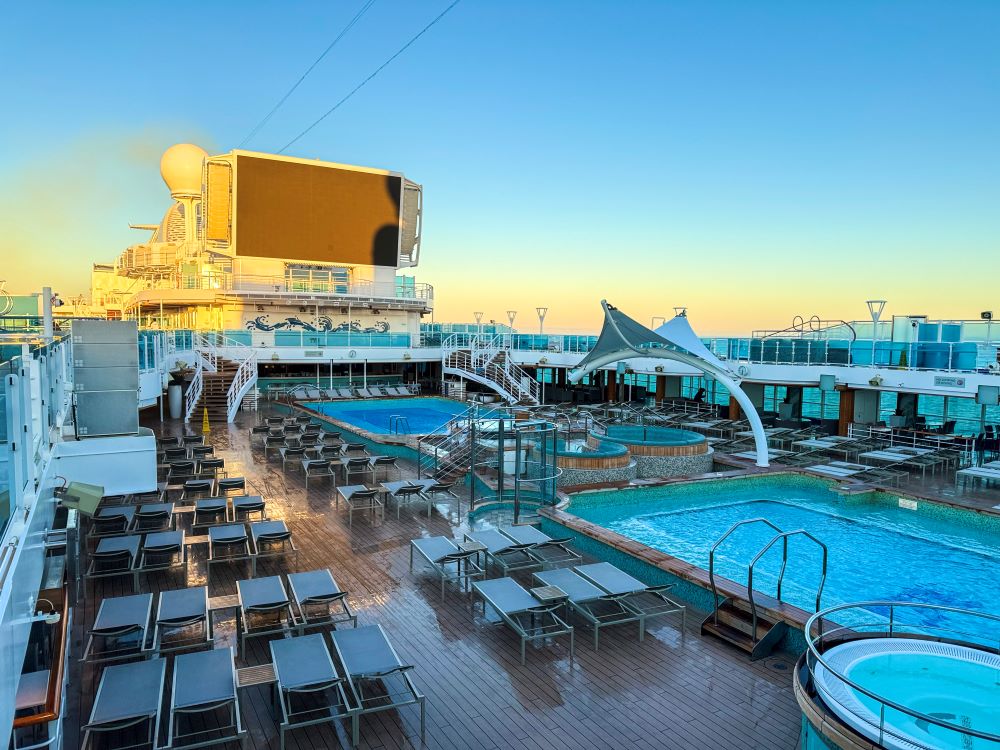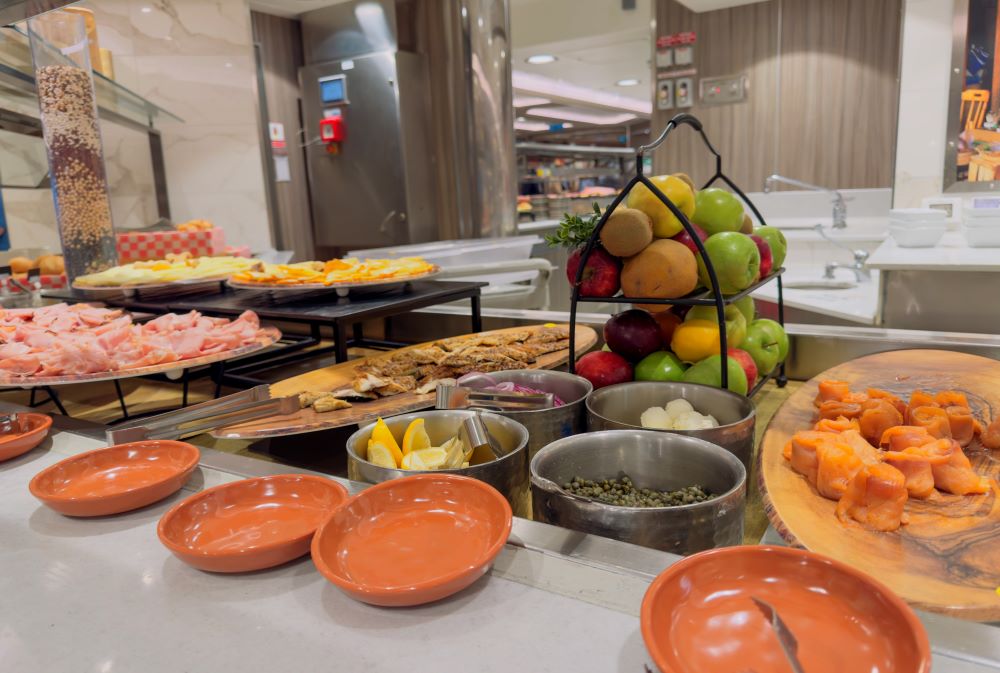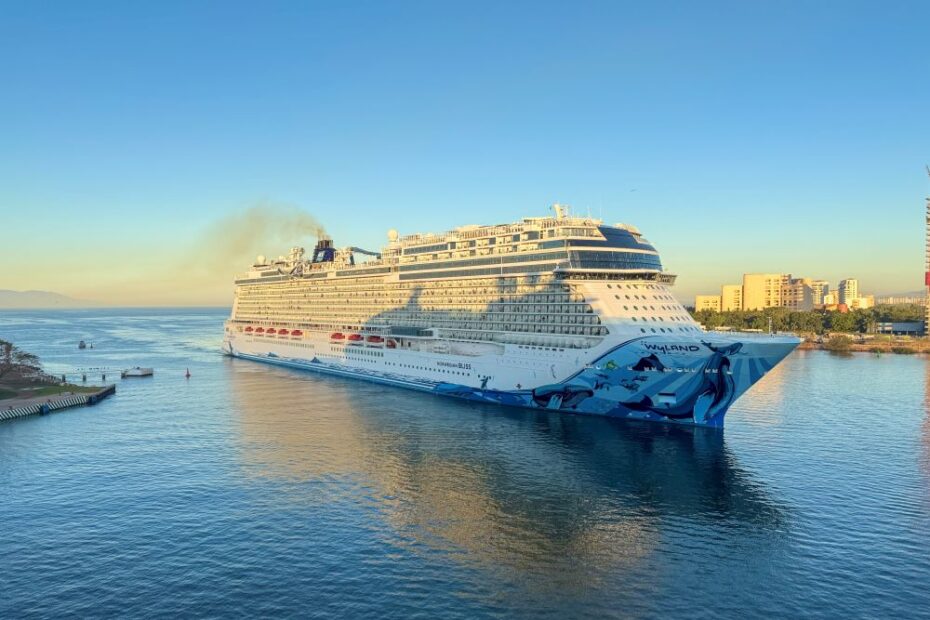Cruise ships are often advertised as the perfect vacation choice—a place where you can enjoy comfort, entertainment, and multiple destinations in one trip. However, not all travelers are enthusiastic about this type of vacation. Although many people enjoy cruises, there are several reasons why this type of travel is not always suitable for everyone.
I myself have been on several cruises – in the Mediterranean, the Pacific, and the Atlantic. And although overall it was beautiful, I have encountered things that can be disappointing. Below, I share 6 reasons why cruises may not be suitable for everyone.
Reasons Why You Might Not Like Cruise Ships?
In this article, we will look at six main reasons why cruises may not be suitable for everyone.

1. Seasickness Can Ruin a Cruise Vacation
One of the most common reasons people avoid cruises is seasickness, or kinetosis. This problem affects far more travelers than you might think.
Even the largest cruise ships still rock, especially in strong winds or on the open sea. For people with a sensitive vestibular system, this can cause nausea, dizziness, or simply an unpleasant feeling.
Although there are medications and natural methods to reduce seasickness, they are not always effective. Therefore, if you are prone to motion sickness or have never traveled by ship before, a cruise may turn out to be an unpleasant surprise.
In my experience, larger and newer cruise ships rock much less because they are equipped with modern stabilization systems.
The sea or ocean on which the cruise ship sails is also very important — the Pacific Ocean is considerably stormier with higher waves, and that is where I felt the most rocking. Meanwhile, in the Atlantic Ocean or the Mediterranean Sea, I didn’t feel any rocking at all during certain stages.
2. Little Space and the Feeling That There Is Nowhere to Escape To
Passengers on cruise ships often feel “trapped” because they cannot move freely outside the ship (after all, you are in the middle of the ocean!). This can seem restrictive, especially for those who are used to traveling freely and independently.
Cabins can be small and cramped, especially the cheaper ones. Many standard cabins are smaller than a typical hotel room, and interior cabins don’t even have windows. Therefore, people who are used to more spacious living quarters may feel uncomfortable.
The cabin with a balcony was very helpful for me. I could go out into the fresh air, look at the sea, and just sit in silence. It made the space feel larger and the vacation more peaceful.
The biggest rush is usually on the first day — when everyone gets on board at the same time and heads to the buffet to explore the ship. At that moment, it really feels like I’ve been thrown into a crowd.
But in the following days, everything becomes calmer. People scatter across the ship’s areas and activities, and it is possible to find quiet places. The bigger the ship, the more opportunities there are to find your own peaceful corner.

3. Liveliness or Hustle and Bustle? Everyday Life on a Cruise Ship
Large cruise ships are like floating cities. They can carry up to five or six thousand passengers. That means lots of life, entertainment, and activities.
But it also means queues. For example, at the buffet, or when embarking/disembarking at ports. For those seeking peace and quiet, this can be stressful.
A little planning helped me. Since I am a morning person, I went to the pool early in the morning when there weren’t so many people. When one pool was full, the other was completely quiet.
There is always an adult area on ships with a pool and hot tub, where it is much quieter than in the main pool.
There are many leisure and entertainment areas available on deck — pools with ocean views, themed restaurants, theater performances, gyms, and even spa centers. With a little planning, you can avoid the crowds and enjoy the cruise adventure on your own terms — whether it’s quiet sunbathing on the upper deck or dining under the stars.
4. Limited Time for Sightseeing
Cruise ships usually dock early in the morning, around 7 a.m., and leave in the afternoon. This gives you about 7 hours to explore a new place. There are some exceptions when ships stay in port much longer, even up to 14 hours.
Some may find this too short, but in my opinion, it is quite sufficient for Mediterranean cities.
Some travelers want a more authentic experience — to immerse themselves in the culture, sit in a local café, chat with people. The pace of a cruise does not really allow for this. You have to follow the schedule. This rush can cause stress and make you feel like you haven’t fully experienced the places you’ve visited.
However… when you see Barcelona, Rome, Marseille, and Ibiza in one trip — that’s a whole different level!
I especially like traveling when the ship stops at islands — Caribbean islands or Asian islands. Because when traveling by plane or other means, I wouldn’t get to see as much.
Read about my travel experience on a cruise ship across the Atlantic Ocean here – Cruise to the USA: 17 days from Barcelona to Miami.
It always helps me to plan a little in advance what exactly I want to see — that way you can really get a lot done. But if you want cultural depth, perhaps a different kind of trip would be better.

5. Monotonous Meals and Limited Dietary Options During the Cruise
Although cruise ships offer a wide variety of food, some travelers find that the selection is repetitive or does not meet their specific dietary needs. The quality and selection of restaurants may vary depending on the cruise line.
People with special dietary requirements — vegetarians, vegans, or those with food allergies — may find it difficult to find suitable meals. Although most ships try to provide a variety of options, the choice is often more limited than in restaurants on land.
Furthermore, if you are a food enthusiast who travels to enjoy authentic local cuisine, cruise ship restaurants may not provide the experience you are looking for.
From my own experience, I can say that Princess Cruises was excellent. The food selection was very wide, and I really felt that they made sure that everyone could find something suitable.
6. High Additional Costs on Board
Although cruises are often advertised as “all-inclusive,” in reality, many things cost extra, which can be an unpleasant surprise.
Drinks, alcoholic beverages, excursions, specialty restaurants, Wi-Fi, and even some activities may require additional money.
These extra costs can quickly add up, making the trip much more expensive than originally planned. For some travelers, this lack of clarity about the true costs creates a negative experience and a feeling that they are being misled.
Furthermore, if you want to enjoy the best the ship has to offer, you will most likely have to pay extra, which can be disappointing for those who were hoping for an “all-inclusive” experience.
Of course, the basics are included in the price – cabin, meals, evening shows, live music, dancing.
For more information on what exactly costs extra, read my article – 11 additional costs on a cruise: Tips and recommendations.

Is a Cruise Right for You?
Kruīzi ne vienmēr ir domāti visiem — un tas ir pilnīgi normāli. Katram no mums ir savas vajadzībCruises are not always for everyone — and that’s perfectly normal. We all have our own needs, travel styles, and expectations.
If you like the freedom to plan your days as you wish, authentic local experiences, plenty of personal space, or if you tend to get seasick, then a cruise may not be the most suitable form of travel for you.
Before booking a cruise, we recommend thinking about what you really want from your trip. Do you want to explore a culturally rich city on your own? Enjoy a leisurely morning in a local café without rushing? Perhaps a trip you plan yourself or a less restrictive form of relaxation would be a better choice for you.
